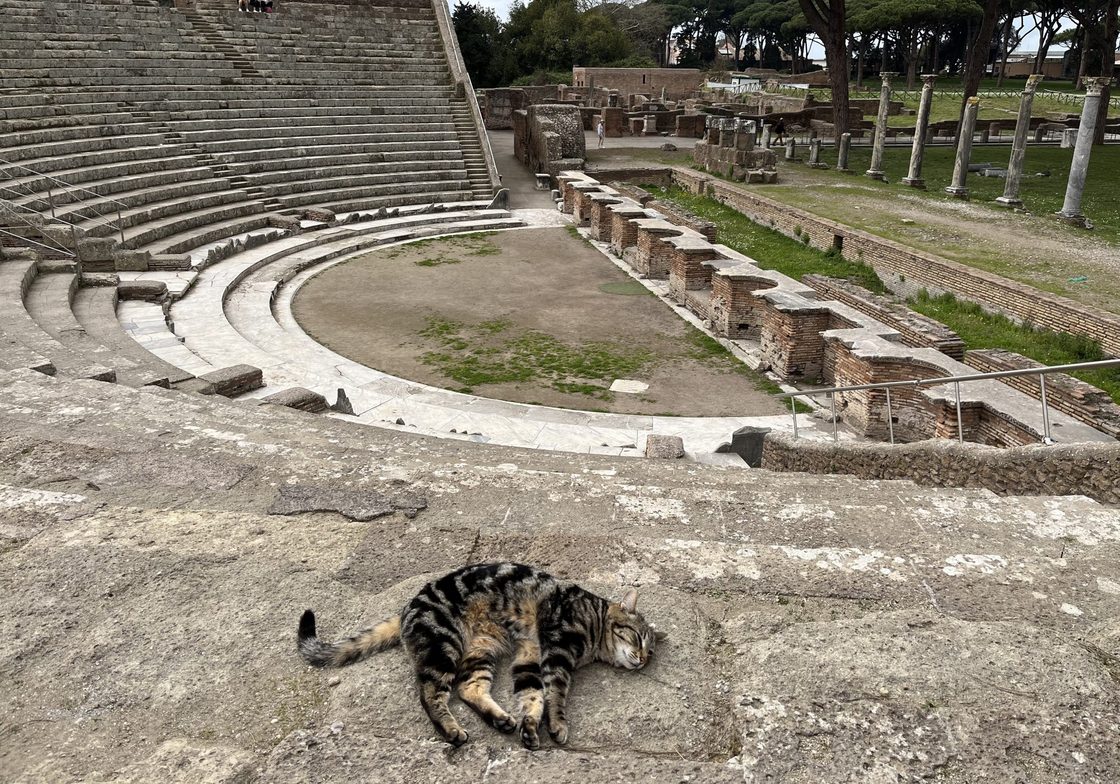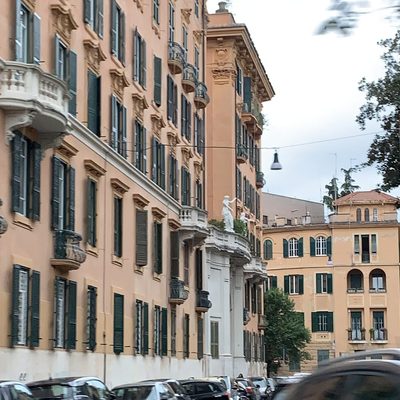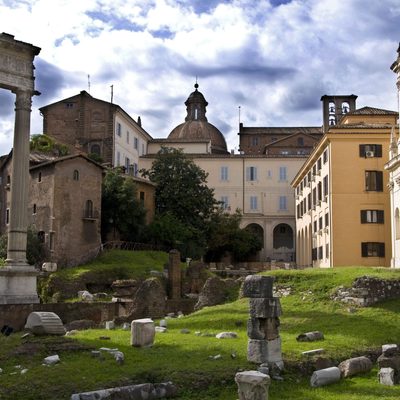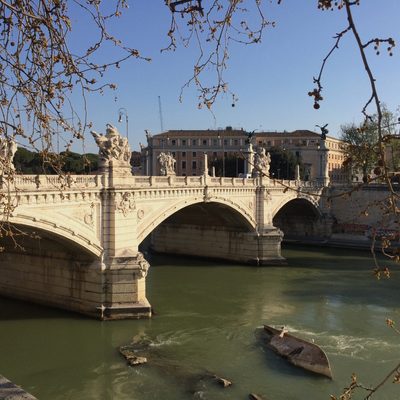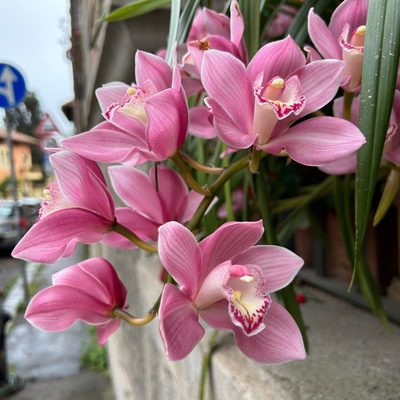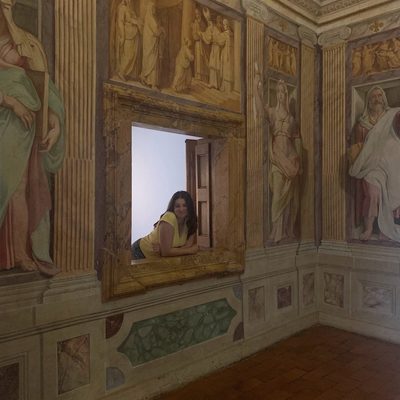Spring 2025
The city of Rome has one of the richest historical pasts in Europe, offering exceptional opportunities to examine the nature of urban and historical change. Students will explore Rome and its environs in depth and compare it with other sites with other histories. They will learn how to integrate experiential knowledge with other kinds of evidence and scholarship. In particular, we will examine how communities from Late Antiquity through the Renaissance and beyond constructed, preserved, re-purposed, decorated, and destroyed spaces and places in the service of political, social, or religious aims and identities.
Message from Faculty Directors

Victoria Morse and William North, Professors of History
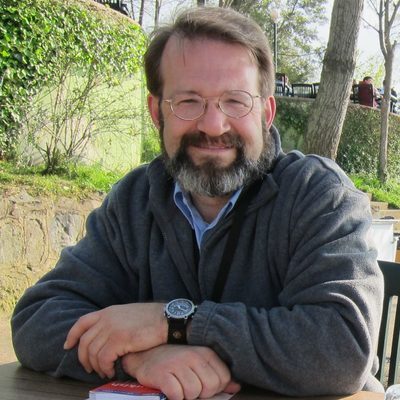
Professors Victoria Morse and Bill North have taught medieval and Renaissance history at Carleton since 1999 and have served as directors of the Medieval and Renaissance Studies program at Carleton since 2000. Both have held fellowships at the American Academy in Rome and have lived in Italy (Rome and Milan) for more than four years. They have led the Carleton OCS Program in Rome five times. Professor Morse’s research and teaching interests focus on the Italian urban experience and changing conceptions of civic space in the late medieval and Renaissance periods. She is also an expert in the history of medieval and Renaissance cartography.
Professor Bill North works on the development of the reform papacy in the 11th and 12th centuries, the ways in which messages and claims about belief, power and identity are translated into visual and material forms, the ways in which the Roman and early Christian pasts were mobilized for contemporary agendas.
Both have worked extensively in Italian libraries and archives. They are excited to share their love of Rome, Italy, and Italian food (and pop music) with students.
Academics
Learning Goals
- Gain deep knowledge of the history and art of medieval Italy and its connections with the wider Mediterranean world.
- Learn to understand urban space and experience in the pre-modern world.
- Learn to integrate textual, visual, and topographical evidence to achieve a deeper understanding of individuals and communities.
- Learn to analyze and explain how spaces, structures, objects, and imagery were and are used to convey complex political, religious, and cultural messages.
- Gain practical skills and confidence in living in a modern urban environment.
- Gain practical skills and confidence in living and traveling in a non-English speaking environment.
Prerequisites
Applicants should be sophomores, juniors, or seniors in the 2024–25 academic year. Students with strong interests in ancient, medieval and Renaissance history, religion, and art; historic preservation; archaeology; public history and memory; the design and management of urban space; or Italian language and culture are encouraged to apply. Evidence of relevant interests through course-work or other experiences will constitute one of the criteria for selection.
Course of Study
18 CREDITS
Students enroll in two regular courses, a 3-credit course, and an additional 3-credit Italian language course for a total of 18 credits. The two regular courses count towards the History major and Medieval and Renaissance Studies, and all three courses count towards European Studies minor. Though Italian language study is strongly encouraged of all participants (a preliminary Italian course will also be available to program participants in Winter 2023), an independent study may be substituted after consultation with the program directors.
HIST 201: Building Power and Piety in Medieval Italy, CE c.300-c.1200 (6 credits)
Through site visits, on-site projects, and readings, this course explores the ways in which individuals and communities attempted to give physical and visual form to their religious beliefs and political ambitions through their use of materials, iconography, topography, and architecture. We will also examine how the material legacies of imperial Rome, Byzantium, and early Christianity served as both resources for and constraints on the political, cultural, and religious evolution of the Italian peninsula and especially Rome and its environs from late antiquity through the twelfth century. Among the principal themes will be the development of the cult of saints, the development of the papal power and authority, christianization, reform, pilgrimage, and monasticism.
Instructor: William North
HIST 206: The Eternal City in Time: Structure, Change, and Identity (6 credits)
This course will explore the lived experience of the city of Rome in the twelfth-sixteenth centuries. Students will study buildings, urban forms, surviving artifacts, and textual and other visual evidence to understand how politics, power, and religion (both Christianity and Judaism) mapped onto city spaces. How did urban challenges and opportunities shape daily life? How did the memory of the past influence the present? How did the rural world affect the city and vice versa? Students will work on projects closely tied to the urban fabric.
Instructor: Victoria Morse
EUST 207: Italian Encounters (3 credits)
Through a range of interdisciplinary readings, guest lectures, and site visits, this course will provide students with opportunities to analyze important aspects of Italian culture and society, both past and present, as well as to examine the ways in which travelers, tourists, temporary visitors, and immigrants have experienced and coped with their Italian worlds. Topics may include transportation, cuisine, rituals and rhythms of Italian life, urbanism, religious diversity, immigration, tourism, historic preservation, and language. Class discussions and projects will offer students opportunities to reflect on their own encounters with contemporary Italian culture.
Instructors: William North & Victoria Morse
LCST 101: Italian Language (3 credits)
This course will provide instruction in spoken and written Italian with particular attention given to developing conversational ability.
Instructor: Local Faculty
Language of Instruction
English
Program Features
Housing
The seminar will be based in the city of Rome, and students will be housed in group apartments.
Excursions
In addition to site visits and day trips in and around Rome, there will be at least three longer excursions (3-5 days) to northern Italy (Ravenna, Venice, and other cities), central Italy (Assisi, Siena, and other cities), and Sicily.


